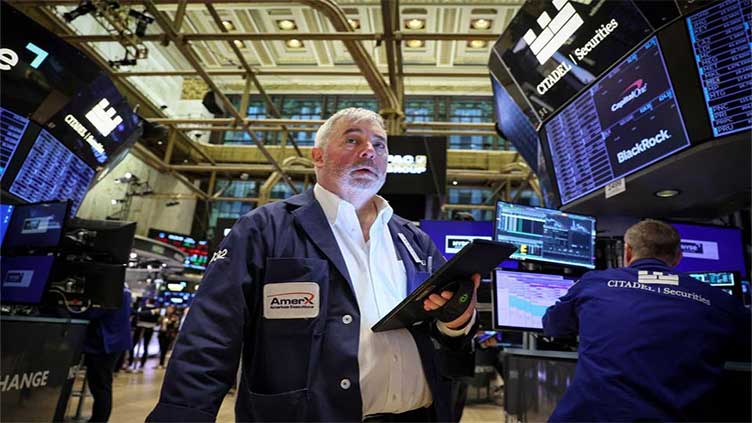Wall Street drifts near its record heights as Treasury yields rise

Business
Wall Street drifts near its record heights as Treasury yields rise
NEW YORK (AP) — Wall Street is drifting Tuesday in a lackluster return to trading following a three-day holiday weekend.
The S&P 500 was 0.2% lower in midday trading and remains within 0.5% of its all-time high set two years ago. The Dow Jones Industrial Average was down 172 points, or 0.5%, as of 11:40 a.m. Eastern time, and the Nasdaq composite was close to flat.
Morgan Stanley sank 3.5% after it said a legal matter and a special assessment knocked $535 million off its pretax earnings for the final three months of 2023, while Goldman Sachs was 1.7% higher after reporting results that topped Wall Street’s forecasts.
Companies across the S&P 500 are likely to report meager growth in profits for the fourth quarter from a year earlier, if any, if Wall Street analysts’ forecasts are to be believed. Earnings have been under pressure for more than a year because of rising costs amid high inflation.
But optimism is higher for 2024, where analysts are forecasting a strong 11.8% growth in earnings per share for S&P 500 companies, according to FactSet. That, plus big expectations for several cuts to interest rates by the Federal Reserve this year, have helped the S&P 500 rally to 10 winning weeks in the last 11.
Treasury yields have already sunk sharply in the bond market on expectations for upcoming cuts to rates, which traders believe could begin as early as March. It’s a sharp turnaround from the past couple years, when the Federal Reserve was hiking interest rates drastically in hopes of getting high inflation under control.
Easier rates and yields relax the pressure on the economy and financial system, while also boosting prices for investments. And for the past six months, interest rates have been the main force moving the stock market, according to Michael Wilson, strategist at Morgan Stanley.
He sees that dynamic continuing in the near term, with the “bond market still in charge.”
For now, traders are penciling in many more cuts to rates through 2024 than the Fed itself has indicated. That raises the potential for big market swings around each speech by a Fed official or economic report.
Yields swung in the bond market Tuesday after Fed Gov. Christopher Waller said in a speech that “policy is set properly” on interest rates.
Yields initially jumped but then receded after Waller said cooling trends for inflation have “made me more confident than I have been since 2021 that inflation is on a path” to the Fed’s 2% target. That should have the Fed able to cut rates this year “as long as inflation doesn’t rebound and stay elevated.”
Until then, Waller said the economy is doing well and giving the Fed the ability to wait and monitor incoming data before making its next move. “We can take our time to make sure we do this right,” he said.
The yield on the 10-year Treasury climbed to 4.03% from 3.95% late Friday. Higher yields can drag on corporate profits, among other negatives for investors, though the 10-year yield is still well below the 5% level it reached in October.
On Wall Street, Boeing fell to one of the market’s sharper losses as worries continue about troubles for its 737 Max 9 aircraft following the recent in-flight blowout of an Alaska Airlines jet. Boeing sank 7.2%.
On the winning side was Carrols Restaurant Group, the largest Burger King franchisee in the U.S., which jumped 13.1%. Restaurant Brands International said it will buy all the stock of Carrols that it doesn’t already own for $9.55 per share in cash.
Stock markets abroad were also mostly lower, including Japan’s, which had been on a winning streak that had carried it to its highest level since its bubble was deflating in 1990.
The Nikkei 225 slipped 0.8% after the value of the Japanese yen strengthened against other currencies. A stronger yen can sap profits from Japanese exporters, and it rose with expectations that the Bank of Japan could be preparing to end its longstanding policy to keep interest rates below zero.



